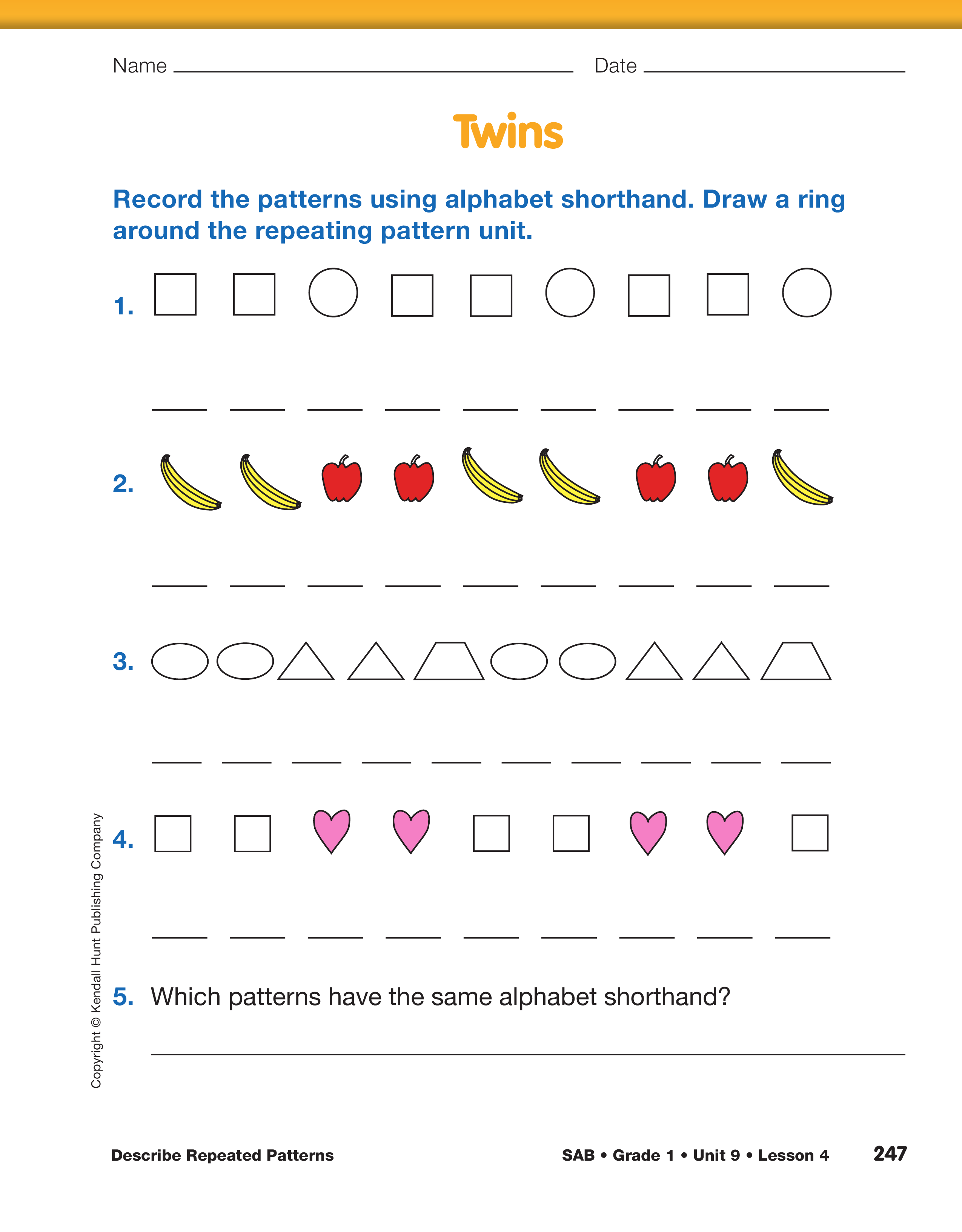You may decide to use connecting cubes in place of links because
there are more colors and some students have an easier
time putting together and taking apart the connecting cubes.
Make a pattern with a chain of links and hide it in a
bag. Encourage students to identify the pattern as you
pull it out of the bag link by link. Students should
identify the pattern with alphabet notations. For
example, a red, blue, green pattern would be an ABC
pattern. Have students suggest another ABC pattern
with links using different colors. Choose two different
ABC patterns. Discuss the similarities and differences
between them with the students.
- What is the same about these two ABC Patterns?
(They both use three colors; each color appears
once in the pattern unit.)
- What is different about them? (The colors are different
or the colors appear in a different order.)
Ask students to create two AABB patterns. Discuss
the similarities and differences between the patterns.
Students should be able to generate a pattern if told
the symbols and vice versa.
Assign the Twins page in the Student Activity Book.
Use the Twins page in the Student Activity Book to assess
students' abilities to identify and describe repeating patterns
with lines of objects [E3]; identify the pattern unit in a repeating
pattern [E5]; and represent patterns using objects, pictures,
words, and symbols [E6].
Place links or connecting cubes in a learning center for students
to play Guess My Pattern as described in Summarizing
the Lesson to provide targeted practice with representing,
identifying, extending, and recording repeating patterns [E3].















